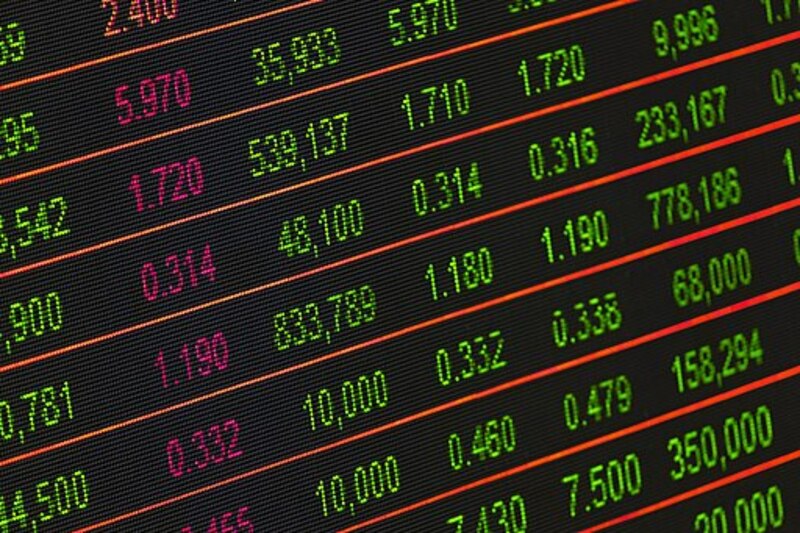
This is sponsored content. Barchart is not endorsing the websites or products set forth below.
In the ever-evolving landscape of financial markets, automated trading systems, or algorithmic trading have garnered much attention in their use, characterized by their capacity to harness computer algorithms for rapid and precise trade execution. The draw of these systems lies in their potential in helping generate substantial profits. However, they also carry a suite of intricacies that require prudent engagement.
The Ascendancy of Automated Trading Systems
The rise in the use of automated trading systems in the financial market has been quite remarkable. In the span of a few decades, these systems have transformed the trading landscape with their ability to process large volumes of data sets and execute trades at breathtaking speeds.
1. Speed and Efficiency
Automated trading systems operate at lightning speed, enabling the analysis of market conditions and the execution of trades within microseconds. This eliminates shortcomings such as emotional decision-making and cognitive biases that are otherwise associated with the handling of data by human traders. The use of automated trading systems is particularly advantageous in high-frequency trading, where market volatility demands split-second decisions.
2. Leaving Out Emotion from Decision-Making
An overriding advantage of using automated trading systems is to leave emotions out of the trading equation. These systems adhere rigorously to pre-defined trading algorithms, eliminating impulsive or irrational actions that traders may take in the face of tumultuous market conditions.
3. Backtesting and Optimization
Automated trading systems afford traders the luxury of retrospective analysis. By backtesting their strategies against historical data, traders can distill key insights, delineating the strengths and vulnerabilities of their algorithms. This iterative process of optimization refines the strategies, thereby enhancing the likelihood of profitable outcomes.
4. Diversification
Automated trading systems, with the scalability and adaptability they offer, have the ability to manage different types of trading strategies and asset classes concurrently. This diversification provides a buffer against risks, improving the overall portfolio performance while mitigating market uncertainties.
The Systems are Not Perfect
While the advantages of automated trading systems are great, there are some challenges that requires careful oversight of these systems. Over-reliance on automation can inadvertently lead to undesirable consequences.
1. Technical Malfunctions
Automated trading systems are inherently computer based systems, and technical glitches, malfunctions and system downtimes can lead to unreliable outcomes that include erroneous trades. Traders using these systems must have robust contingency plans to deal with any unexpected issues.
2. Watch Out for Over-Optimization
Optimization is a valuable tool in the trader's toolkit, but in using automated trading systems traders may sometimes rely too much on it. Over-optimization based solely on historical data can culminate in suboptimal performance when transposed to real-time market conditions. Striking a balance between historical robustness and real-world adaptability is an artful endeavor in trading.
3. The Inflexibility in the Face of Change
Automated trading systems work based on preset algorithms and may not be as flexible as desired. When there are unexpected shifts in market dynamics, automated systems may prove less adept at adapting expeditiously. The latency in recalibrating strategies can result in substantial losses during periods of high volatility.
4. The Imperative of Robust Data Feeds
Automated trading systems depend on reliable data feeds to function and produce good results. Prudent traders must institute safeguards and redundancy mechanisms to mitigate the potential fallout from the failure of their data feeds.
Knowledge, Insights and Expertise are Required
To navigate the intricacies of automated trading systems with success, traders or those who use the systems need the right knowledge and expertise.
1. Mastery of the System
To have mastery of automated trading systems, it is important to understand the algorithms, the underpinning risk management mechanisms and the technical infrastructure supporting the systems. This knowledge underscores an informed decision-making process and positions the trader to adeptly troubleshoot any contingencies that may arise.
2. Sustained Monitoring and Rigorous Analysis
While automation is the big deal with these systems, traders must undertake periodic performance evaluations. This entails analyzing trading outcomes, identifying anomalies and executing necessary adjustments to the underlying algorithmic strategies. A commitment to continuous optimization is vital to adapting to changing market conditions.
3. A Diverse Arsenal of Strategies
Mitigating risk exposure is important to proficient trading. To avoid an overreliance on a single strategy, traders employ a diversified pool of strategies and asset classes to contain risk. By employing a blend of strategies tailored to various market conditions, a trader can create a robust portfolio, thus bolstering resilience in the face of uncertainty.
4. Strengthening Risk Management
Implementing risk management protocols is a prerequisite in automated trading. Establishing stop-loss thresholds and risk parameters serves to circumvent potential losses. Position sizing strategies must be diligently applied to ensure that no singular trade wields the capacity to disproportionately impact the portfolio. Effective risk management mainly involves the safeguarding of capital.
Conclusion
Automated trading systems offer traders important benefits and opportunities within the financial markets, making their use more and more mainstream. Yet, the vigilant trader must diligently walk the fine line between autonomy and oversight. It is important to recognize that automated trading should be viewed as a complement to a comprehensive trading strategy, with human oversight steering the ship toward successful trading.
This article contains syndicated content. Barchart has not reviewed, approved, or endorsed the content, and may receive compensation for placement of the content on this site. For more information please view the Barchart Disclosure Policy here.




/Tesla%20charging%20station%20plugged%20in%20by%20Blomst%20via%20Pixabay.jpg)
/Nvidia%20logo%20and%20sign%20on%20headquarters%20by%20Michael%20Vi%20via%20Shutterstock.jpg)

/Tesla%20charging%20station%20black%20background%20by%20Blomst%20via%20Pixabay.jpg)
